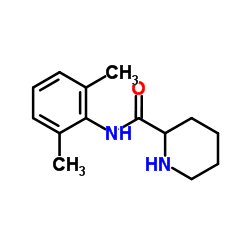Bupivacaine kinetics during hyperthermia in rats.
B Bruguerolle, X Roucoules, L Attolini, A M Lorec
Index: Can. J. Anaesth. 41(3) , 253-6, (1994)
Full Text: HTML
Abstract
The aim of this study was to document possible alterations of bupivacaine pharmacokinetic behaviour in rats during hyperthermia. Two groups of Wistar AF IO PS male rats (Group A = normothermic controls, Group B = hyperthermia-induced animals) received a single 20 mg.kg-1 ip dose of bupivacaine. Two other groups (Group C = normothermic controls without bupivacaine, Group D = hyperthermia-induced animals without bupivacaine) received, under the same experimental conditions, an equivalent volume of saline. Hyperthermia-induced animals (Groups B and D) were placed in a water-bath at 40 degrees C. Bupivacaine or saline were administered (Group B and D) four hours after the beginning of the experiment and blood samples were obtained by retro-orbital sinus puncture 0.25, 0.5, 1, 2, 4 and 8 hr after administration. Bupivacaine and its main metabolite, 2,6 desbutylbupivacaine (PPX) were assayed according to a gas liquid chromatographic method. The Cmax, Tmax, t1/2, Cl, Vd and AUC were determined according to a two compartment open model. Our data have demonstrated a decrease in clearance of bupivacaine (5.85 +/- 0.23 ml.hr-1 and 4.59 +/- 0.35 ml.hr-1 for groups A and B, respectively, P < 0.05, and, Tmax of PPX during hyperthermia (0.24 +/- 0.03 hr and 0.15 +/- 0.0 hr for Groups A and B, respectively, P < 0.05). In conclusion, hyperthermia induces a decrease in bupivacaine clearance in rats which may be of importance in clinical practice.
Related Compounds
| Structure | Name/CAS No. | Molecular Formula | Articles |
|---|---|---|---|
 |
N-(2,6-Dimethylphenl)-2-Piperidine Carboxamide
CAS:15883-20-2 |
C14H20N2O |
|
Kinetics of bupivacaine after clonidine pretreatment in mice...
1995-05-01 [Can. J. Anaesth. 42(5 Pt 1) , 434-7, (1995)] |
|
Population pharmacokinetic analysis of ropivacaine and its m...
2011-09-01 [Br. J. Anaesth. 107(3) , 409-24, (2011)] |
|
Determination of bupivacaine and metabolites in rat urine us...
2003-07-01 [Electrophoresis 24(14) , 2340-7, (2003)] |
|
Lack of metabolic racemisation of ropivacaine, determined by...
1995-01-01 [Chirality 7(4) , 272-7, (1995)] |
|
Determination of bupivacaine and three of its metabolites in...
1998-11-01 [Electrophoresis 19(16-17) , 2997-3002, (1998)] |